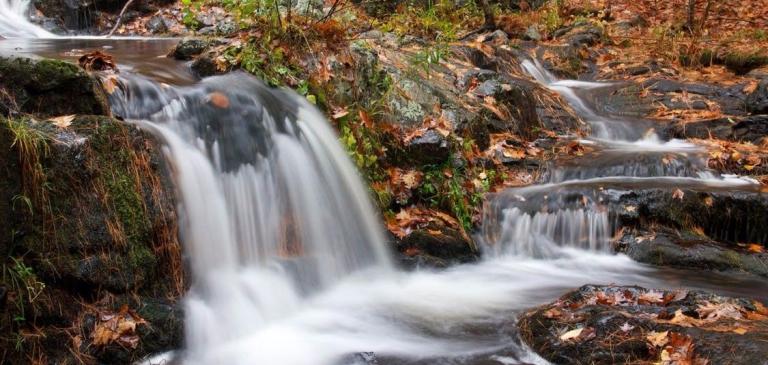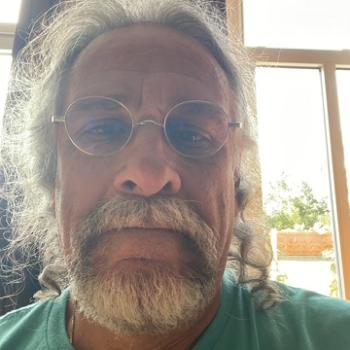From A Common Well
Greetings!
This is the first in a series of posts related to Druidry, to our Druidry, to our own Druidry. Along with my co-contributor, Chris Godwin, we will attempt to interest and inform our readers on matters Druidic. While we are both ADF Druids, I think it is fair to say that the opinions expressed here will be our own, but certainly affected by our participation in and immersion in Ar nDraiocht Fein or better known as ADF.
I like the name of this blog, From a Common Well, because it really states what this about: thoughts from a common source, perhaps, running out of the well into one of the many streams that issue from that place. According to lore concerning the Well of Segais, nine hazel trees grew around it and the hazelnuts from the trees fell into the waters feeding the Salmon of Wisdom. These salmon grew wiser as the trees dropped their bounty into the waters of the well.

Ancestors
The Sea, ultimately the source for the waters in the well, is one of the realms in ADF, along with the Land and the Sky. We envision that the waters of the well extend into the earth and that the well, in a ritual context, provides a gateway to the Ancestors, which are one of our Kindreds. I like to describe the Ancestors in three categories: 1) Ancestors of the blood, meaning those ancestors that are part of our own lineage, our own family line; 2) Ancestors of the heart or hearth, that is those ancestors that we have come to admire because of our hearth inclinations or because they believe like we do or they are those we admire; and finally 3) Ancestors of the bone, meaning those who are buried beneath our feet and who lived on this land long before we stood here. They may not have understood our family (blood) or our ways (hearth or heart), but they understood the Land, here in this place.
As we consider the well, the first thing we see is ourselves. This is, I presume, the beginning of a journey for if we take a good look at ourselves, many questions arise. What we see in the well is what others see as well, pardon the pun. The image is merely a reflection and in this sense, the image is true. As we gaze longer at the image, the challenge becomes more how we see ourselves and this is a reflection tempered by culture and our own likes and dislikes. Finally, as we gaze less at the reflection of ourselves and more on the reflection of the rest of the world in the image, we see our place in this location. Therefore, our place in the well reflects the various collections of who we were and who we are. It seems self-evident.
The Stream
I believe that a stream emanates from the well. It may be one stream, it may be the river Boyne, it may be one of many streams. There are many ways of looking at this stream. For an individual, it is not unusual to stand in the water or watch from the edge of the water. This speaks to immediacy and of standing in the stream. Yet, what do we know of the stream? We have heard the Milesian philosopher Heraclitus state: panta rhei “πάντα ῥεῖ”, or “all is in flux” or “you never step into the same river twice”. This speaks to the impermanence of the flowing of water. While we may state that one is “standing in water”, it might be more correctly stated as one is “standing while water flows by”. Sometime being and the experience overpowers the notion of what is really happening, much like when the sunrise is essentially the movement of the earth and not of the sun. Location and presence often yield unusual results.
As I sit by that stream, I listen. I close my eyes and let my other senses overtake the experience. I listen to the running of the water, which, to me, is an extremely potent sound and one of set of precious natural sounds which is often buried in the hub-bub of everyday life. If I sit and listen, I become just another stationary player in the world of this place. Yes, the branches of the tree move; yes, the grasses bend and flow with the wind that passes by; yes, my chest moves in and out with the movement of air in and out of my lungs, yet, fundamentally, the only thing that is in motion is the flowing of that water.
While the Ancestors may be associated with that well, what they impart to us is best experienced, in my opinion, in the flowing of the water, in the sound that the waters make, in some strange non-verbal language, but in a pattern of a different understanding and a unique context of variable-sound-as-communication. In this way, the Ancestors do not speak to the inside of my head, as in a vision, but the speak to my ears, and the vessels of sound and hearing. I can hear them, I must learn to understand what is being said.
As we stand in the waters, we become nouns in the stories that the Ancestors tell. As we sit beside the waters, we become books into which the stories of the Ancestors are told. As we gaze deeply into those waters, we see in our own face, the many faces that are of the Ancestors and how they manifest themselves in the “we” of the moment.
A Prayer
As I listen to the waters,
I feel their story unfold.
I am the listener,
I hear the story,
I become the confluence of moments,
Memories, and
Messages.
As I listen to the waters,
I understand that I am but a ripple,
In the movement of water
From source
To presence
To a destination unknown.
From a Common Well,
These waters flow.










